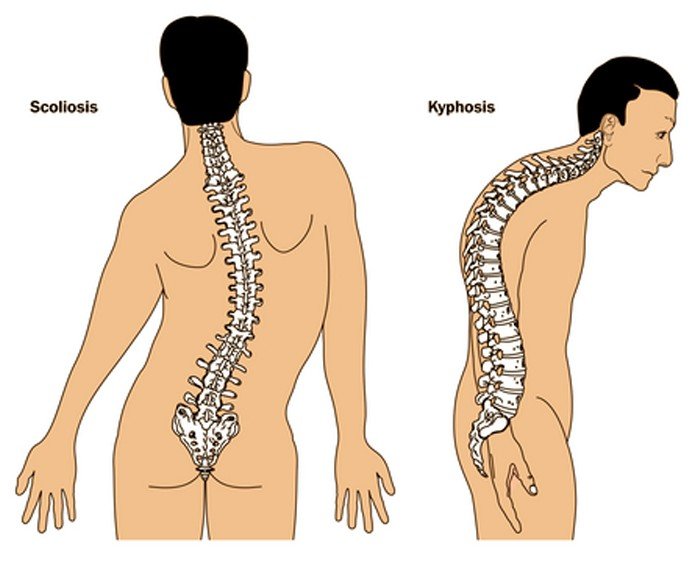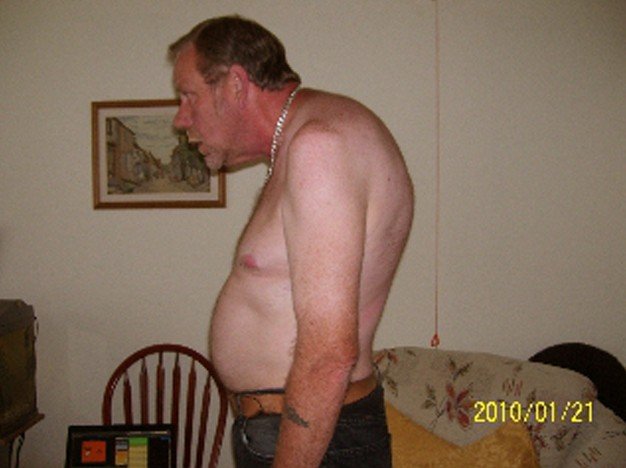Kyphosis
Last reviewed by Dr. Raj MD on January 12th, 2022.
What is Kyphosis?
This medical condition is curvature of the upper spine and causes a rounding or bowing of your back. It comes from the Greek word kyphos, which means hump. It is also referred to as Kelso’s hunchback or round back. At what age this medical condition can occur depends on which type a person has but is more common in older women.
Types of Kyphosis
There are several different types of kyphosis, which include:
Postural kyphosis
This is the most common form of this medical condition and can happen both in young people or older people. In younger people it is referred to as slouching. In older adults it is called a dowager’s hump. This type is more common in females.
Sceuermann’s kyphosis
With this type it can cause many different degrees of pain and be significantly worse cosmetically. It can also affect various areas of the spine. This type is mostly found in teenagers between the ages of ten and fifteen and affects more males than females.
Congenital kyphosis
This type usually happens in infants who in the womb did not have their spinal column develop correctly. The vertebrae of the spin could be fused together or malformed. This type can also suddenly appear in teenagers. It is commonly found in children who have neurological disorders like cerebral palsy. As the child grows it becomes worse.
Nutritional kyphosis
As its name implies, this type may result from nutritional deficiencies. This normally happens during childhood. One nutritional deficiency that can cause it is deficiency in vitamin D.
Post-traumatic kyphosis
This type is usually caused by ineffectively treated or untreated vertebral fractures.
Kyphosis Symptoms
If it is a mild case of kyphosis there are no noticeable symptoms. In severe cases the person will develop a hunch back or slouching posture.
Other symptoms of a severe case may include:
- You may begin to feel your spine becoming stiff.
- Undergoing tenderness.
- May suffer from back pain that can be either mild or severe.
- Back pain with movement.
- A forward posture of the head.
- A difference in shoulder height.
- Chest pain
- Hamstrings, which is a tendon in the back of your knee, may start to feel tight.
- Having difficulty in breathing.
- Feeling fatigued
In some people their neck could also develop a kyphotic curve, also referred to as an outward curve. If this happens they may also have symptoms that can include:
- Neck movements that are limited.
- Neck pain
- Weakness in your legs or arms.
- Having difficulty walking.
- Having a loss of grip strength.
- Low bowel control.
- Paralysis
Kyphosis Causes
The deformity of your spine can be caused by a variety of problems that can include:
Osteoporosis
This is a disorder that results in your bones becoming thin which can result in crushed vertebra which is also referred to as compression fractures. It is most common in people have taken for a long period of time high doses of corticosteroids and older women.
Disk degeneration
In your spine there are soft circular disks. They are located between your spinal vertebras and act as cushions. As a person gets older they start to dry out, causing shrinkage in them. This may not actually cause kyphosis but can worsen the condition.
Cancer and treatment of cancer
If a person has cancer in their spin it can weaken the vertebrae, which make them more prone to compression fractures. Cancer treatments like radiation and chemotherapy can also cause these problems.
Scheuermann’s disease
The kyphosis that is associated with this disease is a hereditary disorder. It usually happens during the growth spurt that happens before puberty.
Birth defects
This is a rare cause and happens when the baby’s spinal column does not develop properly in the womb.
Other causes include:
- Slouching
- Spondylolisthesis, which is when one vertebra slips forward on another vertebra.
- Injury or trauma to the back.
- Connective tissue disorders
- Certain endocrine gland diseases which are the glands that release hormones into your bloodstream. Some of the endocrine glands include the ovaries, testes, thyroid, adrenal, and more.
- Infections like tuberculosis.
- Polio
- Spina bifida
- Tumors
Diagnosis
When you have a physical exam, especially children and teenagers, the physician will check your height. They may ask you to bend forward from the waist so they can view your spin from the side. If you have kyphosis in this position the rounding of the upper back may be more obvious. To check your muscle strength and reflexes the physician may do a neurological exam. The physician may also do imaging tests like a CT scan, an MRI, or x-rays. If you are having any muscle weakness or numbness there are tests that can be done to see how well your nerve impulses are traveling between your extremities and the spinal cord.
If you have a severe case of kyphosis the physician may check to see if the curvature of your spin is affecting your ability to breathe. There are tests that they can do to measure how quickly you empty your lungs and how much air your lungs can hold.
Treatment
What treatment the physician uses will depend on what is causing your case of kyphosis. Some of the treatments can include:
- Corrective surgery at an early age if your have congenital kyphosis.
- Physical therapy and a brace are used if the cause is Scheuermann’s disease. If the curvature is greater than sixty degrees you may need surgery.
- If there is not any pain or nervous system problem compression fractures caused from osteoporosis can just be left alone. The osteoporosis does need to be treated in order to prevent any more fractures. For debilitating pain or deformity the physician may recommend surgery.
- If it is caused by a tumor or infection it needs to be treated aggressively which usually means medications or surgery.
For the pain the physician may advise you to take over-the-counter medication like ibuprofen, naproxen, or acetaminophen. If these are not strong enough the physician may give you a prescription for a stronger pain medication. If the cause is osteoporosis the physician can prescribe medications that will help to strengthen your bones.
There are some variations of kyphosis that can be helped by wearing a body brace, especially children who have Scheuemann’s disease, while their bones are still growing. You can also do stretching exercises to improve the flexibility of your spine and to help strengthen your abdominal muscles to help improve your posture.
Kyphosis Pictures
Pictures collection of the medical condition Kyphosis…


